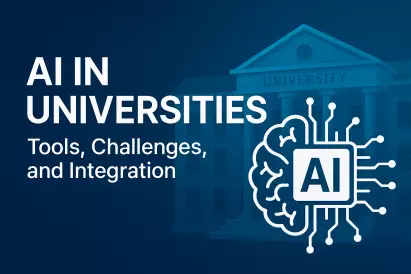Summary: This article explores the booming segment of Master’s programs in Financial Markets across Far East Asia, highlighting the key growth drivers, skill demand, curriculum innovation, employment trends, and future prospects. It analyzes how digital transformation and geopolitical realignments are shaping finance education against the backdrop of a rapidly evolving financial landscape.
Market Context and Size: Financial Landscape in Far East Asia
The Master’s in Financial Markets in Far East Asia is strategically well-positioned thanks to the region's surging economic output, sophisticated capital markets, and tightening regulatory climate.
With countries like China, Japan, and Singapore accounting for nearly one-third of the global GDP, the appetite for advanced financial knowledge continues to soar.
Over the past 3–5 years, the market for financial education in the region has grown considerably, spurred by enhanced international cooperation, increased mobility, and domestic reforms.
While exact enrollment figures focused solely on financial markets are elusive, broader finance-related Master’s programs are showing a consistent 13.5% CAGR between 2022 and 2026.
In China, domestic student enrollment dominates, though government incentives for international academic partnerships are fostering cross-border engagement.
Neighboring countries like South Korea, Hong Kong, and Japan benefit from proximity and cultural alignment. Growing outbound student flows, particularly into destinations emphasizing sectoral innovation, also drive diversification.
For comparison across sectors, students interested in finance may also pursue programs such as Corporate Finance degrees.
Key Drivers: Regulation, Economy, Digitalization & Geopolitics
Far East Asia is projected to grow at over 4% in 2025, driven largely by the expansion of technology, tourism, and domestic demands.
This macroeconomic uptick is increasing the need for financial market specialists well-versed in areas such as equity management, asset valuation, and capital budgeting.
However, financial volatility remains, largely shaped by shifting global macroeconomic conditions and trade diplomacy.
Regulatory reforms in nations like South Korea and China—especially improvements in state-owned enterprise governance and market transparency—are upgrading talent requirements.
Regulatory compliance, sustainable investing, and risk governance are transforming into core curriculum themes in Master’s programs. Programs that blend law, analytics, and finance are in higher demand, similar to academic domains like International Business Law.
There’s an urgent talent gap in quantitative finance, prompting schools to embed coding (Python, C++, R), AI modeling, data analytics, and algorithmic trading into their core modules.
These skillsets are crucial in high-frequency trading, decentralized finance, and quantitative risk appraisal.
Curriculum Innovations and Specializations
Programs in Far East Asia are evolving rapidly to meet labor market expectations. Innovative curricula increasingly incorporate interdisciplinary modules, such as integrating finance with computer science, economics, and law.
Topics such as digital assets, ESG investing, DeFi (Decentralized Finance), and algorithm-based trading dominate program outlines.
Experiential learning — through internships, industry projects, and applied research capstones — is now central to program value. Micro-credentials and digital badges further promote lifelong learning while supporting specific workforce needs.
With AI penetrating all research and business domains, finance degrees are positioning predictive analytics and machine learning at the forefront.
Fields such as Data Analytics and Green Finance are increasingly integrated within financial market studies, reflecting employer demand for digitally native and sustainability-focused professionals.
Student Demand, Delivery Modes & International Access
Hybrid, modular, and fully online study formats offer flexibility for working professionals, increasing access and encouraging international participation in Far East Asian programs.
Dual-degree options and EdTech integrations across institutions create more stackable and customizable academic pathways.
China’s encouragement of Sino-foreign joint degree programs and visa expansions provides incentives for international student movement.
Enrollment is also seeing a gradual rise from outbound Chinese students seeking value-based programs in economies like South Korea, Malaysia, and Japan.
Flexible access formats are comparable to professional offerings seen in domains like Executive MBA programs, which focus on modular and part-time study for career professionals.
Essential Skills and Graduate Employability Outlook
Employers across Far East Asia consistently require technical depth and cross-functional adaptability. In demand are candidates proficient in coding, statistical modeling, blockchain tech, simulation algorithms, and AI-based analytics.
Core roles include risk managers, asset strategists, compliance professionals, fintech developers, ESG analysts, and trading strategy consultants.
Graduates are recruited by investment firms, regulatory bodies, consultancies, and technology startups. High internship engagement rates embedded into program design ensures smoother school-to-career transitions and positively impacts placement statistics.
Soft skills are just as important. The ability to adapt to diverse cultural environments, communicate across legal-financial domains, and analyze complex geopolitical scenarios grants graduates an edge. This is akin to the growing emphasis on employability in programs such as International Management.
Institutional Quality, Accreditation and Recognition
Most Far East Asian institutions follow regional quality assurance guidelines with global accreditations (e.g., EQUIS, AACSB). Notably, bilateral educational pacts and student mobility arrangements between nations in the region are improving degree recognition and cross-credit transfers.
Policy adjustments related to graduate visas and skilled labor endorsements are making regional education hubs like Hong Kong and Singapore more appealing.
Additionally, new trends in educational quality link curricula to other areas such as Quality Management, creating a more integrated approach to academic standards and labor readiness.
Affordability, ROI & Sector Competitiveness
Cost remains a barrier in some economies despite funding options including scholarships, employer sponsorships, and government grants.
Institutions that market strong ROI in terms of graduate placement and salary alignment with global financial centers can mitigate pricing concerns.
Domestic players across China, Japan, and South Korea compete with foreign universities setting up joint institutions and delivering executive-style flexible degrees.
The growth in education tech and cross-border collaborations is helping Asian programs close gaps with Western models in both prestige and academic resources.
Cost-performance-conscious students also compare adjacent specializations in Entrepreneurship in Far East Asia and Innovation and Project Management domains.
Challenges, Risks and Outlook (2025–2028)
While growth prospects for finance education in the region are strong, key risks remain. Affordability constraints across lower-tier demographics, shortage of credentialed faculty, and lagging research infrastructure could hinder scalability.
Programs must also stay attuned to market disruptions caused by technology, global regulation, and political conflict scenarios.
From 2025 to 2028, the sector is expected to see continued enrollment growth, deeper integration of ESG and DeFi modules, blockchain certifications, and modular learning models designed for professional upskilling.
Prospects for greater policy alignment on credit recognition, visa relaxation, and online education equity further improve access and cross-border collaboration potential.
These trends mirror forward-thinking orientation seen in domains like Sustainable Development and Environmental Management, which also integrate policy awareness and technological transformation into academic delivery.



